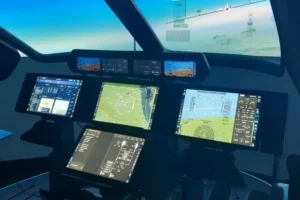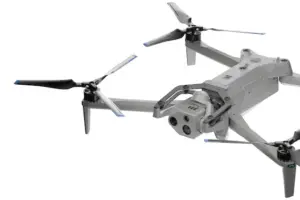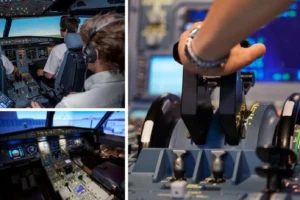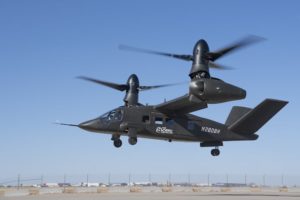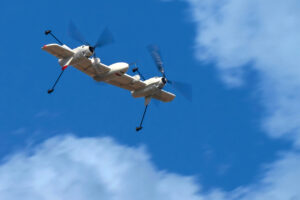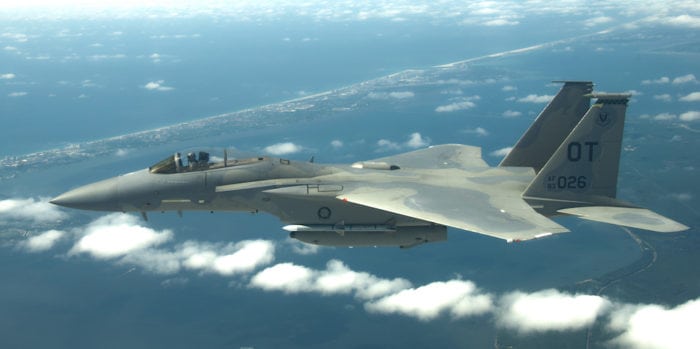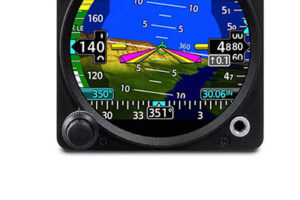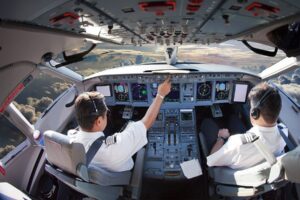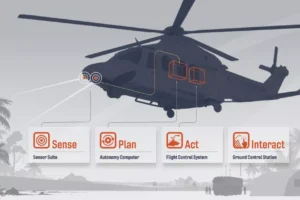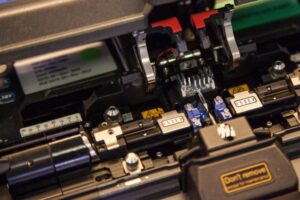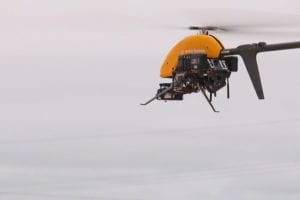With manufacturers only recently releasing their first-generation GPS WAAS products, operators are just now getting their hands around current capabilities of the Wide Area Augmentation System (WAAS). However, the imminent expansion of WAAS-like capabilities to Europe through the European Geostationary Navigation Overlay Service (EGNOS) is expected to lead to a vibrant, new market now that the capability will extend beyond North America.
WAAS is a system of satellites and ground stations that correct the errors in GPS signals caused by effects like ionospheric disturbances. With such signal corrections, WAAS provides position accuracy that is better than three meters 95 percent of the time, without the need to purchase additional receiving equipment or pay service fees.
Now the industry just has to wait for the market to catch up to the capability.
FreeFlight Systems, of Waco, Texas, says it received the first WAAS-based Technical Standard Order (TSO) in 2003 for a Beta-1 sensor used in the Alaska Capstone program.
"Class 3 WAAS sensors buy you a great deal of flexibility in landing, as the decision heights for landing or diverting are much lower," said James Davis, FreeFlight Systems chief technology officer. "Those LPV (Localizer Performance with Vertical guidance) approaches have to be designed, so adding more precision approaches to runways in the U.S. is the key to WAAS GPS."
According to FAA, there were 1,595 precision LPV approaches at 872 airports in the United States as of fiscal 2009, which began last October.
During an LPV approach, a satellite navigation receiver provides the pilot with both lateral guidance — replacing or augmenting the function of the localizer, a radio beacon that guides the plane to the runway centerline in an Instrument Landing System (ILS) — and vertical guidance.
"The problem with ILS is that a large object like an airplane can generate interference, so the signal can get out of whack by the time it gets to the airplane," said Davis. "With LPV, you can get down to 200 feet before you have to see the tarmac. Without WAAS and LPV approaches you might need that cloud deck at 600 to 800 feet."
Unlike Required Navigation Performance (RNP) approaches, WAAS-enabled LPV approaches don’t have a requirement for self-alerting in the cabin if the aircraft deviates. "Ultimately it isn’t as finely tuned as RNP," said Davis, "but LPV has benefits because it is much less expensive to implement."
Developed for use in precision approaches, the technology will have even further-reaching benefits as a key driver toward Automatic Dependent Surveillance-Broadcast (ADS-B).
"ADS-B is driving all the WAAS work being done because ADS-B requires a WAAS sensor," said Randy Shimon, vice president of engineering and a partner with Accord Technology, of Eagle, Idaho. "LPV approaches are important, but they are yesterday’s news.
"We’re in a transition now where TSO-C129 (Airborne Supplemental Navigation Equipment Using the Global Positioning System) is good enough for certain applications but it’s all going to the TSO-C145c class of GPS receiver," Shimon said. The myriad changes associated with TSO-C145c (see box, page 33), mean that manufacturers, for the most part, have to start from scratch when developing a WAAS system.
"There have been attempts by major companies to take systems designed for TSO-C129 and update them to -C145c, but everybody gives up and starts over," Shimon said. "The skill set necessary to design a GPS receiver is a fairly limited one in the world."
Three Classes
The WAAS GPS sensor market consists of three sensors: Class 1, 2 and 3. More of the WAAS message content is used as the class number increases.
Class 1 sensors provide no vertical guidance, but permit LNAV (lateral navigation) landings because they provide better lateral navigation than uncorrected GPS. As of May, there were 4,153 LNAV procedures at 1,940 airports, according to the FAA.
Class 2 sensors add some vertical guidance to the equation, which permits both LNAV and VNAV (vertical navigation) approaches. Davis explained that most companies are skipping Class 2 "because if you’re going to go to all the effort to decode the message you might as well go to the next step and decode the additional data for Class 3."
Class 3 WAAS sensors not only decode the entire message, they also update at a very high rate to provide instantaneous positioning data when the aircraft is close to the ground.
The required DO-178B design assurance level for software used in Class 1 and 2 sensors is Level C, meaning that a failure would be considered "major." For Class 3 sensors, it is the more stringent Level B, in which a failure would be considered "hazardous."
EGNOS is Europe’s first venture into satellite navigation, and augments the American GPS and Russian GLONASS systems. The European constellation consists of three geostationary satellites (two operated by Inmarsat; one by the European Space Agency) and a network of ground stations. The system allows users to determine their position to within two meters, compared with about 20 meters for GPS or GLONASS alone.
EGNOS is a joint project of the European Space Agency, the European Commission and Eurocontrol, and is a precursor to Galileo, the full global satellite navigation system under development in Europe.
"The big trend for us is WAAS-like capabilities that are coming to Europe through EGNOS," said Dave Bailey, manager of new business for CMC Electronics, which introduced its first WAAS GPS product in 2008. "EGNOS was developed to the same standard as GPS and GLONASS so they’re all compatible. Equipment being delivered now is ready for EGNOS, and broadens the market."
EGNOS offers the possibility of instrument landing approaches similar to conventional ILS, without the need to install navigation infrastructure at the airport runway. Furthermore, the cockpit data display is the same as for ILS, so there are no familiarization problems for pilots and no additional training costs.
In February 2008, an Air Nostrum Dash-8 turboprop flew four LPV test approaches at San Sebastian airport on the northern coast of Spain, and EGNOS testing continues.
The trials were performed as part of the GNSS Introduction in the AviatioN secTor (GIANT) project. GIANT is a European Commission Sixth Framework Program (FP6) project with the aim of supporting the introduction of EGNOS and Galileo services into the aviation market, while demonstrating to the responsible authorities that required safety levels are achieved.
As Bailey mentioned, hardware developed for WAAS will work with EGNOS, as well, though there will be some differences in software. That doesn’t mean the industry isn’t paddling hurriedly to keep up with the ever-changing world of GPS.
"The technical challenge is that the infrastructure supporting GPS is constantly changing under our feet," said Davis. "We have GPS and now we have WAAS. Ground-based augmentation is also being thrown into the mix, which our systems will at some time have to be compatible with."
Avionics Magazine’s Product Focus is a monthly feature that examines some of the latest trends in different market segments of the avionics industry. It does not represent a comprehensive survey of all companies and products in these markets.
Market Moves
Following are some recent developments announced by manufacturers and suppliers of GPS WAAS receivers.
Universal Avionics’ WAAS/SBAS-capable flight management system (FMS) has received approvals for new platforms. In May, FAA issued a supplemental type certificate (STC) to Chicago Jet Group, of Aurora, Ill., to install Universal’s dual UNS-1Fw or UNS-1Lw installation in the Dassault Falcon 50. In April, the company announced the first installation of its WAAS/SBAS-FMS and Vision-1 Synthetic Vision System in a McDonnell Douglas MD-87. In March, FAA awarded an STC to Duncan Aviation for a dual UNS-1Ew installation in the Lear 45. The STC, which included Localizer Performance with Vertical Guidance (LPV) capability, covers Lear 40 and 45 models.
Garmin, of Olathe, Kan., in May was granted FAA’s first approved model list supplemental type certificate (AML-STC) for Wide Area Augmentation System (WAAS) avionics installed in a helicopter. The company said the AML-STC is for the installation of its GNS 400W/500W series and includes approval for IFR flight and steep approach lateral-precision with vertical (LPV) guidance.
Under the AML-STC, the GNS 400W/500W series units may be installed in about 50 different makes and models of helicopters, including the Bell 206, Enstrom 280FX, Agusta A109, Eurocopter EC135, MD Helicopters 600N-NOTAR and Robinson R22 and R44.
Honeywell made a series of announcements in recent months related to its sensor products. The company in May said installation of its SmartPath Precision Landing System at Bremen Airport in Germany was completed. SmartPath is a ground-based GPS augmentation system that supports precision approaches and landings and transmits digital guidance signals to aircraft. The Bremen installation is one of eight Honeywell Ground-Based Augmentation System (GBAS) installations operating worldwide. Also, Honeywell said it is developing new FMS software that will support NextGen features such as Future Air Navigation System (FANS 1/A) datalink, WAAS-LPV and Required Navigation Performance for certain Bombardier Challenger 601 and Global Express aircraft. The FMS software update will be available this year, Honeywell said.
FreeFlight Systems in May entered into a partnership with Trig Avionics, of Edinburgh, Scotland, a manufacturer of Mode S transponders. The partnership is designed to bring ADS-B systems to the general aviation and turboprop markets. FreeFlight said its GPS/SBAS sensor, combined with Trig’s panel-mounted Mode S transponder, offer operators a means to equip their aircraft with a compliant 1090 MHz ES ADS-B Out solution. Also, this approach will support future upgrades to full ADS-B In services such as Traffic Information Services – Broadcast (TIS-B) and Flight Information Services – Broadcast (FIS-B), the companies said.
In January, NovAtel, of Calgary, Alberta, named Michael Ritter president and CEO. Ritter joined NovAtel with more than 20 years of experience in the Global Navigation Satellite System (GNSS) industry, including time as a senior executive with Trimble Navigation. Prior to Trimble, he held senior positions with Schlumberger and other companies. NovAtel supplies precision GNSS components and subsystems, including receivers, antennas, enclosures and firmware.
TSO-C145 Receivers: Revisions Described
TSO-C145c refers to Revision D of RTCA DO-229 describing WAAS Minimum Operational Performance Standards (MOPS). TSO-C145a refers to Revision C of DO-229.
There are more than 100 errata in Revision C of the MOPS document that are corrected in Revision D. Most of these changes relate to erroneous references, and provide more explicit requirement statements to reduce subjectivity in interpretation.
Jayanta Kumar Ray, group manager of GNSS Technology for Accord Software & Systems Private Ltd., of Bangalore, India (a partial owner of Accord Technology), examined for Avionics Magazine some of the major changes in functional and performance requirements in Revision D compared to the earlier versions. They are:
Revision D refers to Satellite Based Augmentation System (SBAS) instead of Wide Area Augmentation System (WAAS), thereby making the document relevant and inclusive of all the WAAS-like overlay systems outside the United States, such as Europe’s EGNOS, MSAS of Japan and GAGAN of India.
The consideration of SA (Selective Availability) error due to intentional degradation of range is abolished in Revision D of the MOPS. The removal of SA has impact on the availability of position and integrity in various phases of flight. This has made a significant positive influence in the performance of the newer receivers compliant with DO-229D compared to older receivers that are compliant with earlier version of the document and did not have the capability to detect the presence of SA.
The definition of various SBAS/WAAS messages are modified or corrected, which changes the way the aerospace receiver interprets the data arriving from the SBAS/WAAS satellites, thereby enhancing the performance of the receiver.
The selection of GPS satellites used in a position solution is modified in the newest revision of the MOPS (i.e. Revision D), which improved the availability of position and integrity significantly. This has created a huge difference in performance of GPS-SBAS receivers compliant with the newest MOPS compared to receivers compliant with the earlier MOPS.
The requirements of sensitivity and dynamic range of the receiver are made more stringent, accounting for intra and inter system interference from other satellites. A receiver that meets the earlier revision of the MOPS without sufficient margin will fail to pass the sensitivity and dynamic range requirements in the newest MOPS. Receivers meeting the sensitivity of interference specified in the newer MOPS are more robust and more reliable in a high interference environment.
Predictive Receiver Autonomous Integrity Monitoring (PRAIM), a key feature used by the pilots, is introduced in Revision D of MOPS.
Companies
Avidyne www.avidyne.com
Accord Technology www.accord-technology.com
BAE Systems www.baesystems.com
CMC Electronics www.cmcelectronics.ca
Cobham www.cobham.com
Crossbow Technology Inc. www.xbow.com
Emteq www.emteq.com
FreeFlight Systems www.freeflightsystems.com
Honeywell www.honeywell.com
Garmin www.garmin.com
Goodrich Sensors and Integrated Systems www.goodrich.com
L-3 Communications www.l-3com.com
Memscap www.memscap.com
Northrop Grumman www.northropgrumman.com
NovAtel www.novatel.com
Presagis www.presagis.com
Raytheon www.raytheon.com
Rockwell Collins www.rockwellcollins.com
Sagem Avionics www.sagemavionics.com
Selex Sensors and Airborne Systems www.selex-sas.com
Spectralux www.spectralux.com
Systron Donner Inertial Division www.systron.com
Thales www.thalesonline.com/aerospace
Universal Avionics www.uasc.com


